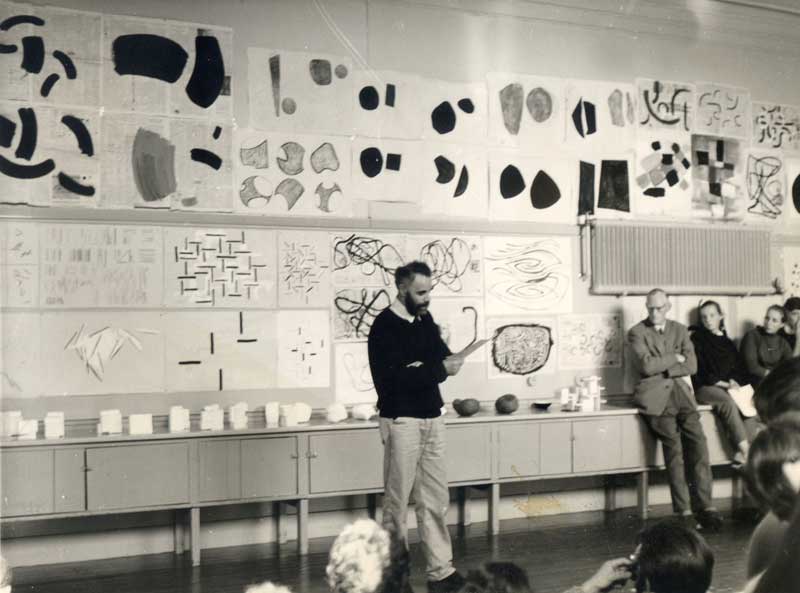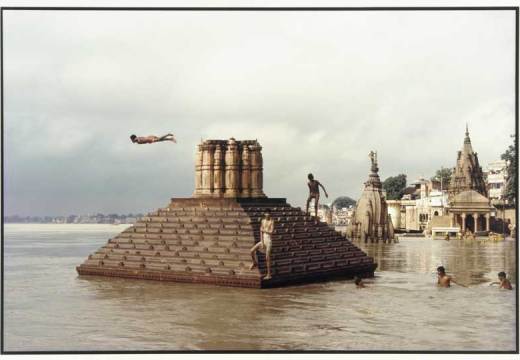‘Basic Design: A Revolution in Art Education’ at the Hatton Gallery presents student and teacher’s work alongside archival and video material that explores the re-evaluation of art education in Britain during the 1950s and ’60s. The exhibition, part of a broader research project initiated by Tate in 2013, places particular emphasis on Newcastle University. It looks at artists such as Richard Hamilton and Victor Pasmore, who famously pioneered new pedagogies of process-led approaches to making. With support from the first Coldstream report (1960), the principles of Basic Design brought new theoretical and practical rigour to art education. Nationally, artists such as Richard Smith, William Turnbull, Roy Ascott and Harry Thubron among others absorbed the holistic modernity of the Bauhaus and applied it to British art schools. Structured around the rather oblique principles of intuition, science and technology and rational process, students were encouraged to experiment with the fundamentals of line, shape and colour.
Receiving exposure through exhibitions such as ‘The Developing Process’, which was held at the Hatton Gallery in 1959, the work was almost typically abstract, offering a regional adoption of International Modernism: muddied hues, wonky squares, rectangles, whirls and dots. The aesthetic paradigms of British mid-century abstraction feel distant indeed, and the broader political and social upheavals later in the Sixties would leave much of this work looking dated. I would have been interested to see links made between the legacy of Basic Design and the more radicalised student and staff projects that emerged throughout the decade, such as the Hornsey College of Art occupations, the Anti-University, and Alexander Trocchi’s Sigma Project. These projects were explored at Flat Time House in the exhibition ‘The Mental Furniture Industry’, 2013, and my feeling is that there is a much bigger exhibition to be launched, which traces all of these legacies in parallel.
One can perhaps see the legacy of Basic Design as the first stages in the continued professionalisation of art schools in the 1980s and ’90s when artists started to become engaged in ‘research’ within their ‘practices’. Basic Design’s emphasis on formal experimentation feels very removed from my own experience of art school (I studied on the BA Fine Art at Newcastle University, graduating in 2004). Ultimately, art education in this country since the Sixties has shifted from creativity to criticality. Students are now expected to be literate in economic, social and political discourse and the influence of critical theory has become pervasive. Actually, and ironically, formal experimentation isn’t that privileged in art schools any more. It would have also been interesting to place the developments within the exhibition within an international context. For instance, John Baldessari’s Post-Studio crits (peer-to-peer critique) at Cal Arts in Los Angeles in the Sixties provides a more recognisable framework for contemporary art schools. ‘Basic Design’ is nevertheless a fascinating, if brief, introduction to a moment that now feels like a time capsule.
‘Basic Design: A Revolution in Art Education’ is at the Hatton Gallery, Newcastle University, until 13 December.
Unlimited access from just $16 every 3 months
Subscribe to get unlimited and exclusive access to the top art stories, interviews and exhibition reviews.













![Masterpiece [Re]discovery 2022. Photo: Ben Fisher Photography, courtesy of Masterpiece London](http://www.apollo-magazine.com/wp-content/uploads/2022/07/MPL2022_4263.jpg)
It’s time for the government of London to return to its rightful home